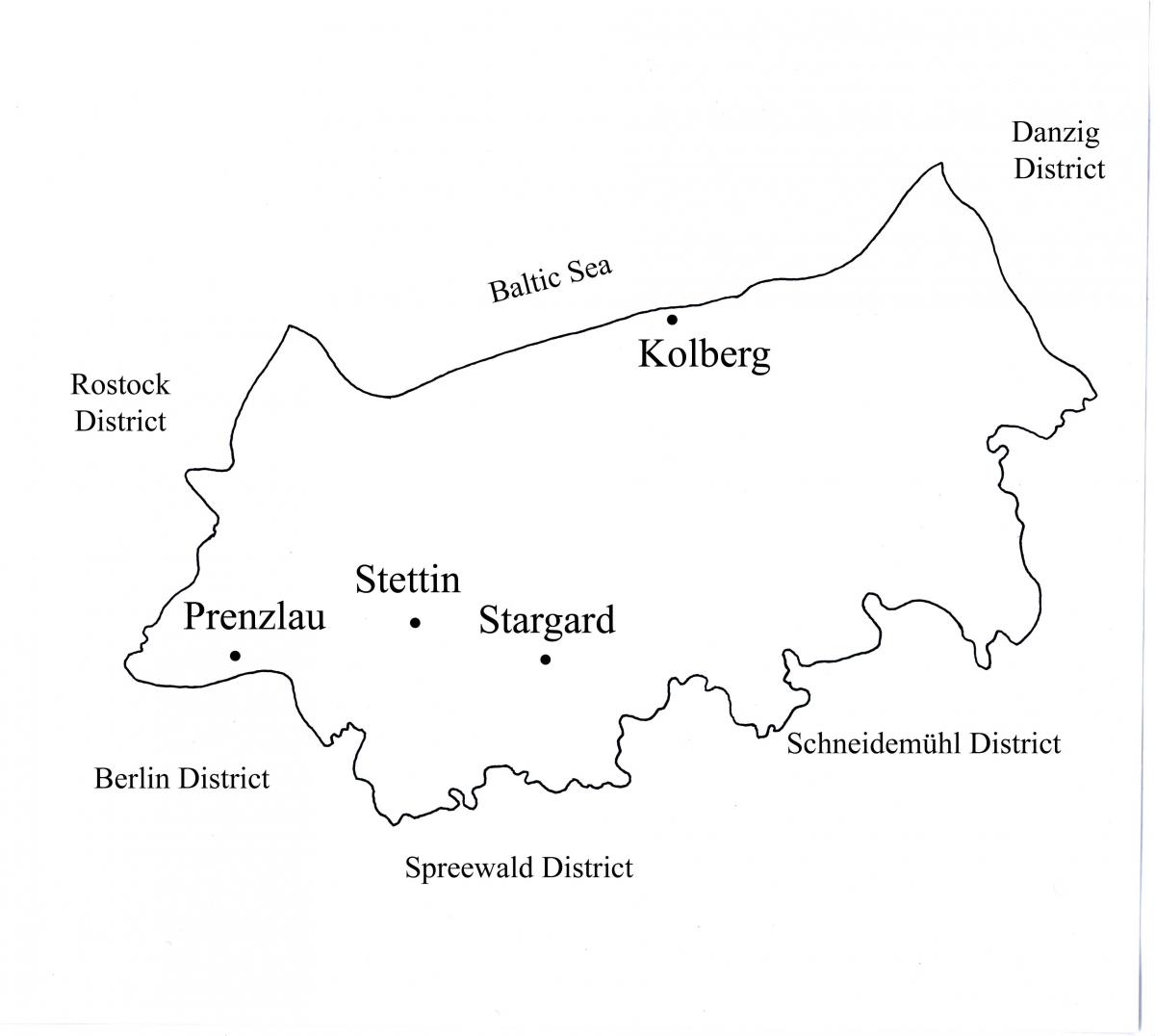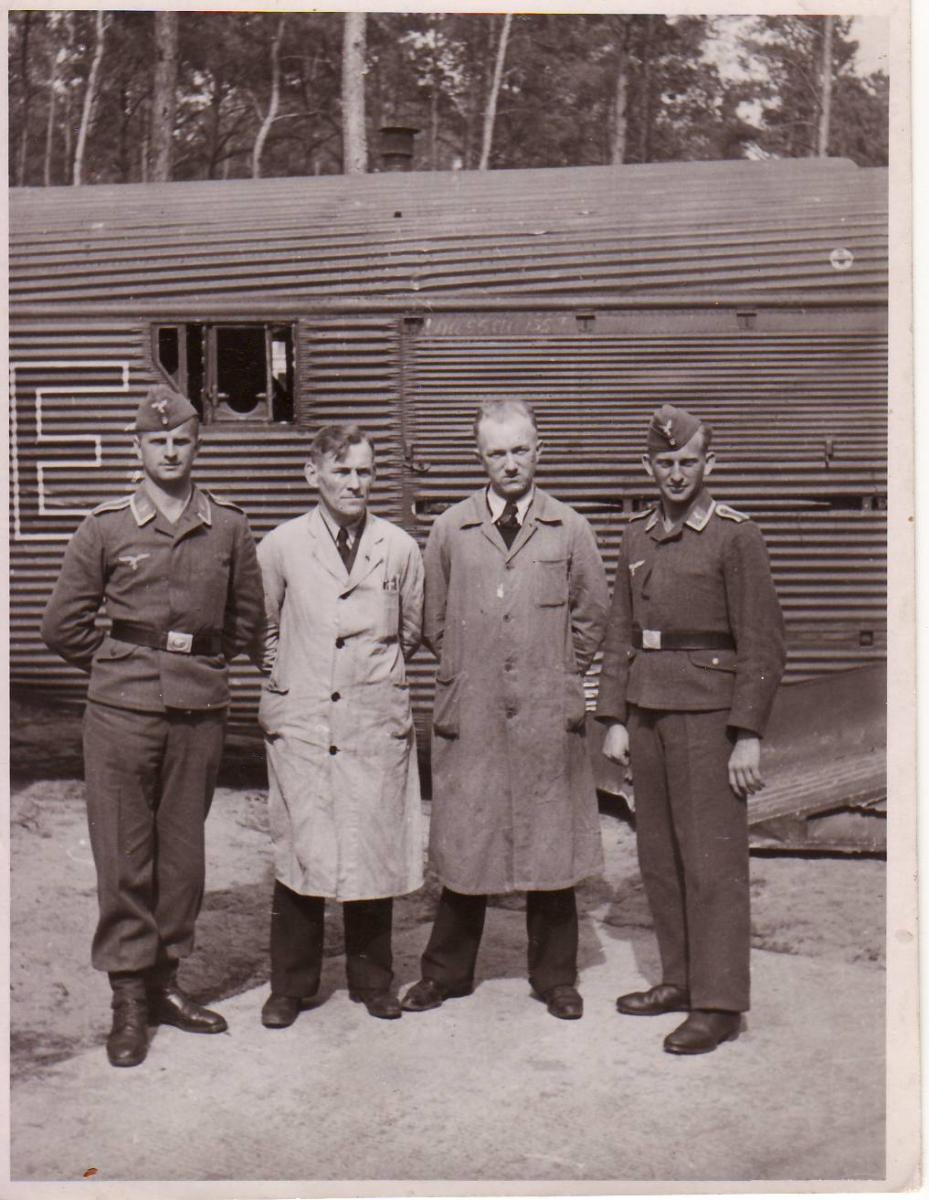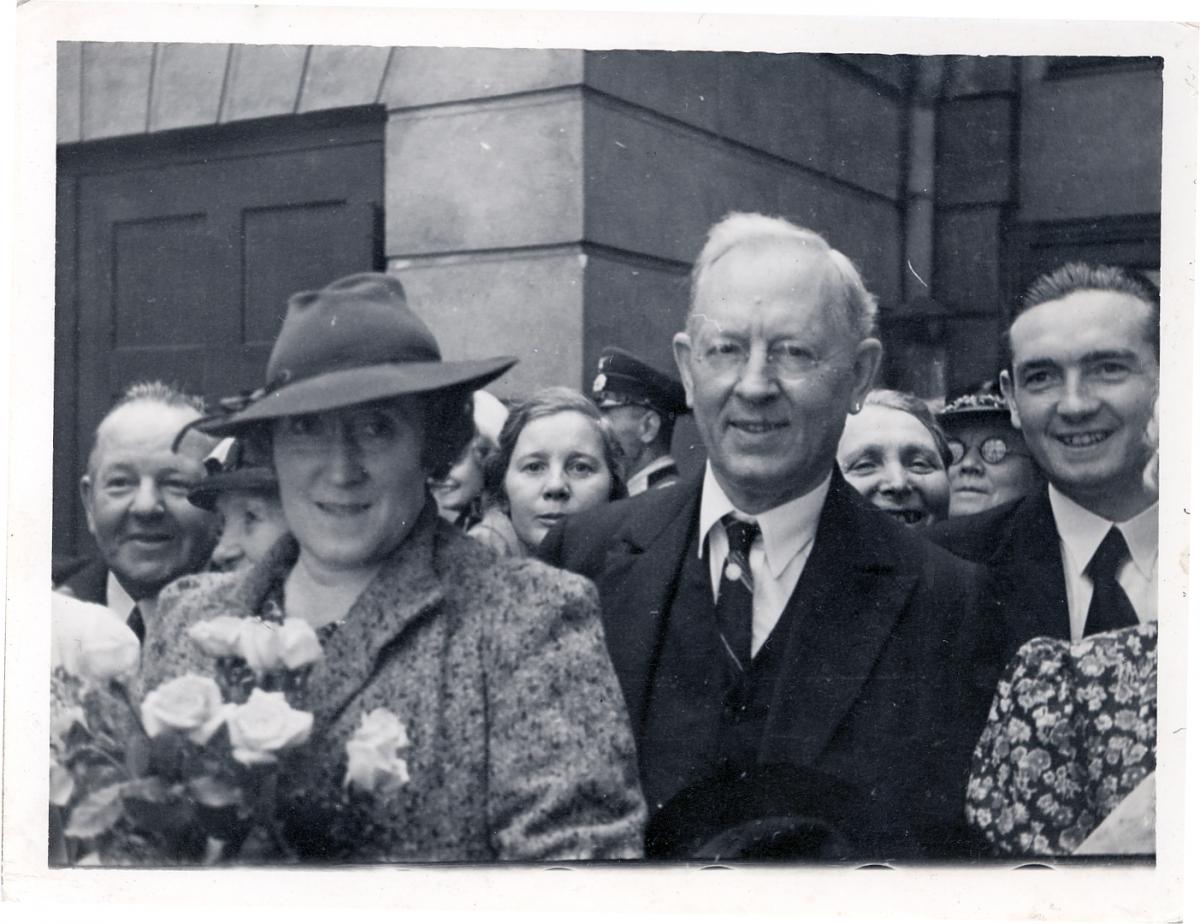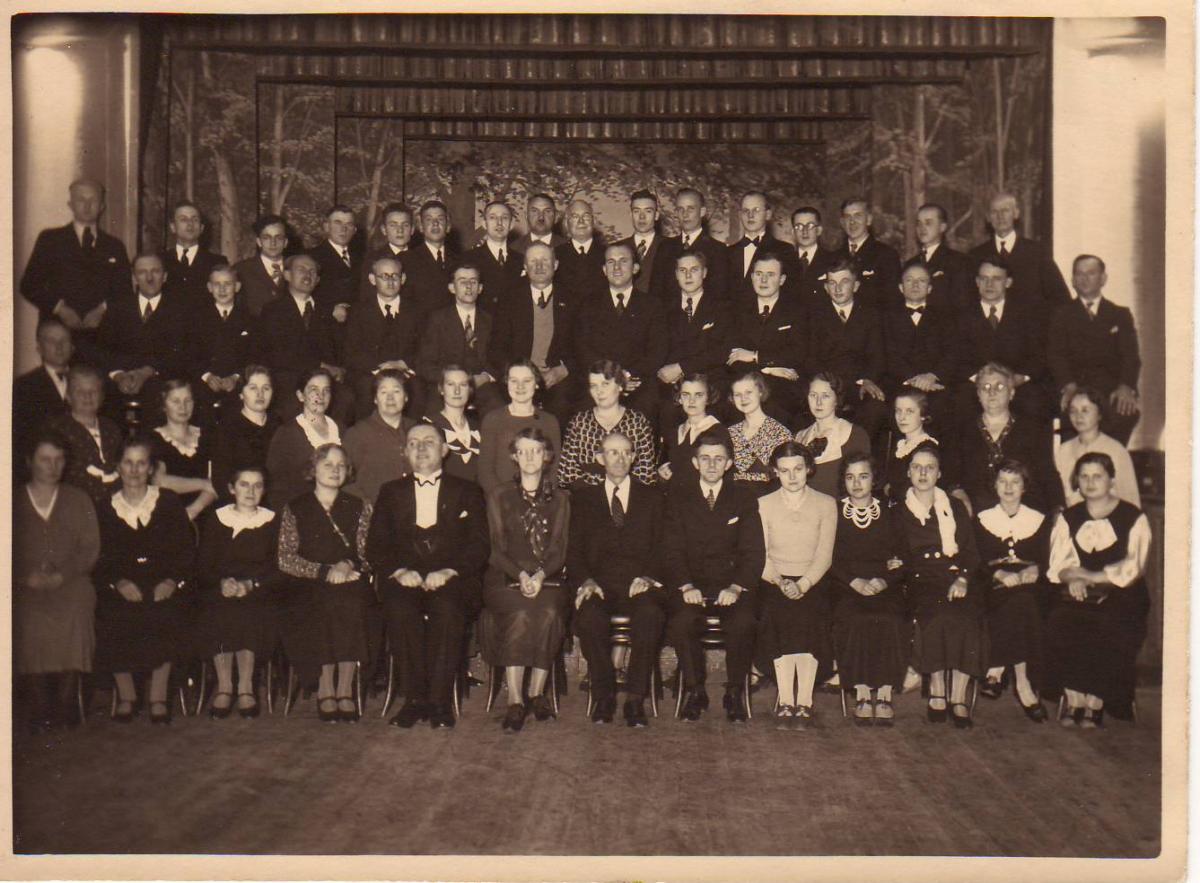Stettin District
Roger P. Minert, In Harm’s Way: East German Latter-day Saints in World War II (Provo, UT: Religious Studies Center, Brigham Young University, 2009), 447-9.
Situated near the mouth of the Oder River by the Baltic Sea, the city of Stettin was a major port and industrial center in northeastern Germany. The Church of Jesus Christ of Latter-day Saints had a substantial population of members in the region beginning in the early twentieth century. In addition to the large branch of Saints in the city of Stettin, there were branches in Prenzlau (thirty-three miles to the west), Stargard (nineteen miles to the east), and Kolberg (sixty-five miles to the northeast).
The history of the East German Mission shows the following entry for Sunday, May 8, 1938:
| Stettin District[1] | 1939 | 1940 | 1941 | 1942 |
| Elders | 17 | 21 | ||
| Priests | 16 | 9 | ||
| Teachers | 21 | 23 | ||
| Deacons | 22 | 22 | ||
| Other Adult Males | 93 | 92 | ||
| Adult Females | 265 | 268 | ||
| Male Children | 27 | 26 | ||
| Female Children | 18 | 16 | ||
| Total | 479 | 477 | 478 | 469 |
On this, the previous and the following day, the spring conference of the Stettin District was held in Stettin. Miss. Pres. and Sister Alfred C. Rees attended, as well as the elders of the Stettin and Rostock Districts, and the two lady missionaries, Martha Kruger and Erna Boehme. The public meeting held on Sunday night was attended by one-hundred seventy members and friends. At this meeting, district president Hellmuth Plath was honorably released and Bro. Erich Berndt sustained as president of the Stettin District. Bro. Plath was then appointed first counselor to the chairman of the Mission Genealogy Association.[2]
 The branches of the Stettin District during World War II
The branches of the Stettin District during World War II
Erich Berndt lived with his family in a suburb of Stettin. In the fall of 1938, he had his first opportunity to represent the Church to the police in Stettin; they wanted information regarding the district conference held in that city on October 1–2. Brother Berndt provided that information and also helped the foreign missionaries, who had just returned from the evacuation to Denmark,[3] to register to live and work in Stettin.
East German Mission records show a second district president served during the years 1940–42, namely, Ernst Winter. This condition may have been a result of the fact that Brother Berndt was traveling a great deal to visit not only the branches of the Stettin District, but also those of the Rostock District to the west. The history of the Rostock Branch lists Erich Berndt as a visitor in the meetings there on several occasions. Indeed, the history of the Rostock Branch included the announcement on February 15, 1942, that the Rostock District had been annexed to the Stettin District.[4]
 District president Erich Berndt (third from left) with colleagues at the factory where he was killed in an air raid in 1944 (D. Berndt)
District president Erich Berndt (third from left) with colleagues at the factory where he was killed in an air raid in 1944 (D. Berndt)
Erich Berndt was a supervisor in a factory producing motors for airplanes and was probably doing a great deal of overtime work when he was released as district president in 1942. Brother Winter continued as district president and served for the next few years, at least until November 1943.[5] At that time, Willi Dretke signed an announcement as district president.[6]
Erich Berndt was one of the few members of the Church in the Stettin District to be educated beyond public school and an apprenticeship. In the field of precision mechanics, he supervised industrial apprentices in an aircraft factory on the outskirts of Stettin.[7] On April 11, 1944, enemy aircraft unloaded their bombs onto the factory. The story was told that Brother Berndt had gone back at the last minute to close the door of an aboveground bunker—one not sufficiently sturdy to withstand the bombs—and was killed by a sudden blast. The news of the tragedy was conveyed to Erich Berndt’s wife, Erika, by her father; she was staying at that time with her two children in a small town in the countryside east of Stettin. Dieter Berndt had been a popular figure in the Church and was decidedly opposed to Hitler’s government and the Nazi Party.
 Elder Joseph Fielding Smith and his wife, Jesse Evans Smith, attended a Berlin conference in the summer of 1939. They are shown here with members of the Stettin District (Boehme)
Elder Joseph Fielding Smith and his wife, Jesse Evans Smith, attended a Berlin conference in the summer of 1939. They are shown here with members of the Stettin District (Boehme)
From statements made by the leaders of the East German Mission, it is clear that district and branch conferences continued to be held in the Stettin District through at the least the end of the year 1944. Christel and Edith Wilms, then young women in the Stargard Branch, recalled fondly those district conferences:
We always liked the activities and conferences we held in Stargard and in the district. One time, there was an opera singer; her voice was absolutely beautiful. Those conferences sometimes lasted for several days. On those Saturdays, they performed a play, and we usually stayed at the home of some members because we did not have enough money to go back home [to Stargard] and then come back the next morning.[8]
 Members of the Stettin District Choir (I. Boehme)
Members of the Stettin District Choir (I. Boehme)
Because the branches in Stettin, Kolberg, and Stargard were in territory ceded to Poland in 1945, the German members of those three branches were evicted and the survivors moved across the Oder River to the west. Only the branch in Prenzlau was still in existence by the fall of 1946.
Notes
[1] Presiding Bishopric, “Financial, Statistical, and Historical Reports of Wards, Stakes, and Missions, 1884–1955,” CR 4 12, 257.
[2] East German Mission Quarterly Reports, 1938, no. 20–22, East German Mission History.
[3] East German Mission Quarterly Reports, 1938, no. 44. See the chapter on the East German Mission for details regarding the evacuation of foreign missionaries in September and October 1938.
[4] Rostock Branch, “Manuscript History and Historical Reports, 1917–1962,” February 15, 1942, LR 7647 2. Church History Library. The Rostock District had been organized from the Stettin District on January 21, 1938.
[5] Ibid., July 26, 1924.
[6] Stettin Branch, meeting minutes: announcement, November 1943, LR 12728 11, Church History Library.
[7] Dieter Berndt, interview by the author in German, Berlin, Germany, August 20, 2006.
[8] Christel Wilms Radukoswki and Edith Wilms, interview by the author in German, Dortmund, Germany, August 7, 2006; summarized in English by Judith Sartowski.
